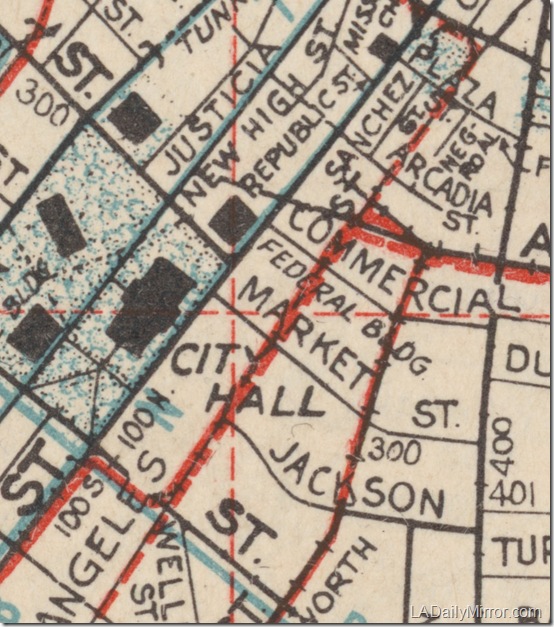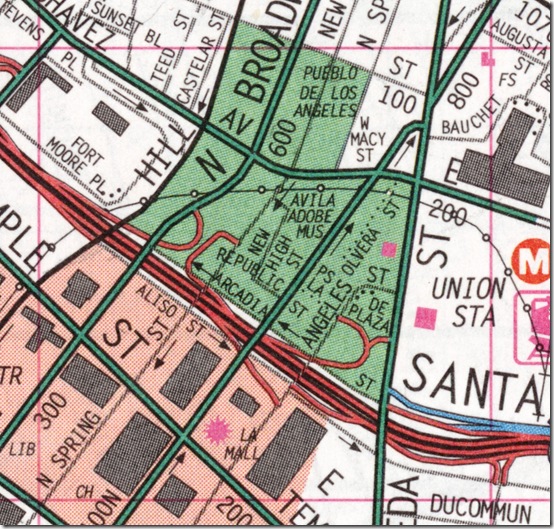

Image: 1946 Thomas Bros. Guide showing “Negro Al”
The recent controversy over the name of a hunting camp used by Texas Gov. Rick Perry and his family sent me to the Daily Mirror archives for a 1946 Thomas Bros. Guide, which shows “Negro Al,” an abbreviation for “Negro Alley,” the polite name for the street also known as Calle de los Negros.

June 29, 1882: Calle de los Negros remains an unsavory place, judging by this letter from Horace Bell.

March 23, 1896: A Times article recounts the sordid history of Calle de los Negros, including the Chinese Massacre, and although the story says the name was “obliterated … from the list of the city’s streets” that’s obviously untrue.

And the common name is visible on the Sanborn map of 1894, sheet 14B, which is available online from the Los Angeles Public Library — if you have a library card.
The alley surreptitiously appears in W.W. Robinson’s map of the old city, reproduced in “Lawyers of Los Angeles.”
Although it isn’t labeled, Robinson notes that No. 91, the Ballerino establishment, fronted on “Calle de los Negros of the Mexican period.”

By the 1954 Thomas Bros. Guide, any trace of the alley was gone.

And the area was even more simplified by the 1997 Thomas Bros. Guide.



In my 2005 walking tour of LA I twice spent time on Olvera Street, the first time as the beginning of my downtown walking tour and the second time because I was early for my train to Tucson and it was the Day of the Dead. I am a history buff and that sweet area really anchored the history of the city in my thinking and appreciation. Thanks for adding another layer to my understanding.
LikeLike
Hi, LARRY—I wrote a paper for LAPD Lieutenant’s School in 1969 and published it as “The Chinese Massacre” for the Historical Society publication, “The Link” [March 1997 (Vol. 4, No. 1).
Los Angeles in 1871 disproved the popular view of lynch-law as cowboys who get stray horses and cows tangled in their loops or who make clerical errors with a branding iron….
“Nigger Alley,” the extension of Los Angeles Street across the Santa Ana Freeway from Parker
Center, was named for the dark-complected Indians who frequented its dens and cribs. HARRIS
NEWMARK, prominent businessman, wrote of his first night in L.A. in 1853: “Each side of Nigger
Alley was occupied by saloons and gambling houses….Those in charge of the (faro) banks were
always provided with pistols and were ready, if an emergency arose, to settle disputes on the spot…..Human life at this period was about the cheapest thing in Los Angeles. Nigger Alley was as tough a neighborhood as could be found anywhere.”
Best, MAX K. HURLBUT, Bellingham, WA
LikeLike
Larry,
Here’s a link to a blogpost about the area that now houses CSU Dominguez Hills – once known as Ni**er Slough. My mom (and barber) told me that it was a popular crawfishing area for Black folks in Compton and Watts up to the 1950’s.
LikeLike
@Michael: Here’s a post I wrote about it in 2008 — with a map by The Times’ Charles Owens. http://lat.ms/pGpKMx
LikeLike
Pingback: How L.A. Forgot the Chinese Massacre of 1871, One of the Worst Mass Lynchings in U.S. History